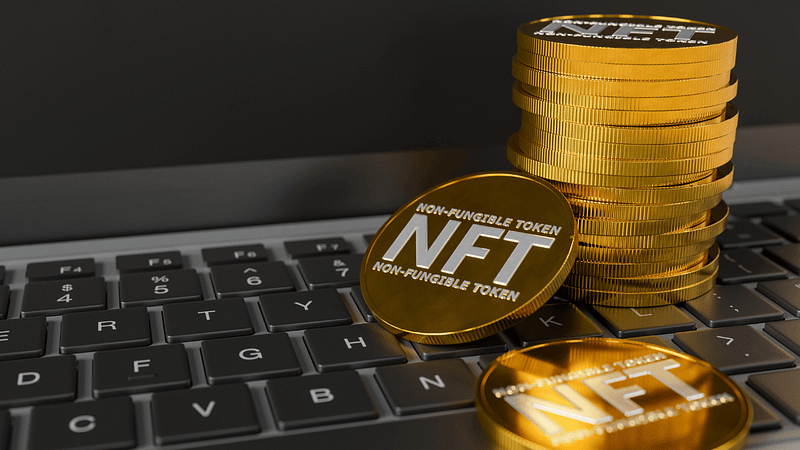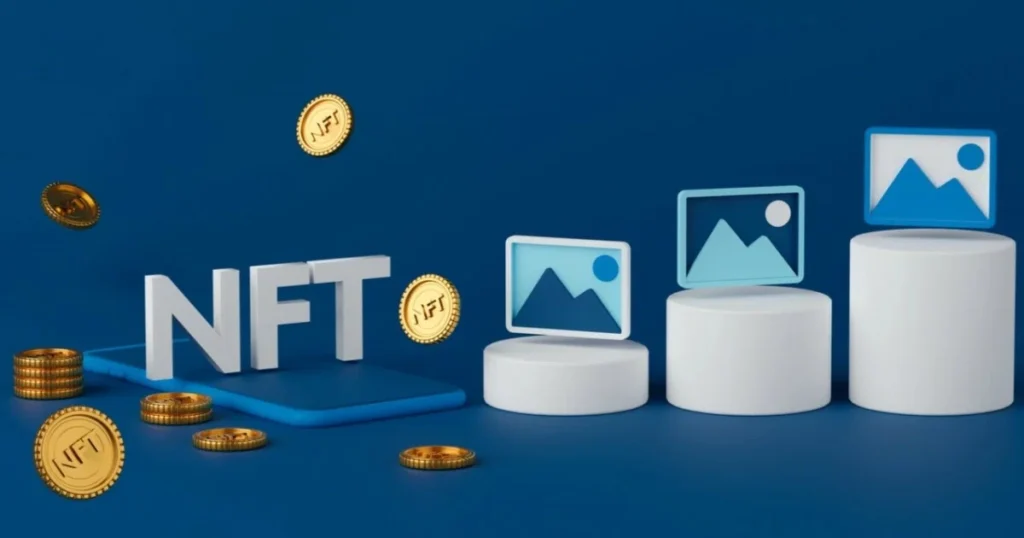The digital collectibles landscape continues to evolve at breakneck speed, with NFT sales rankings providing crucial insights into market dynamics and consumer preferences. As blockchain technology reshapes the art and collectibles industry, understanding these rankings has become essential for investors, creators, and enthusiasts navigating this volatile yet promising market.
Recent NFT sales rankings demonstrate significant shifts in market leadership, revealing how certain collections maintain their dominance while emerging projects challenge established hierarchies. These rankings not only reflect current trading volumes but also indicate broader trends in digital asset adoption, utility integration, and community engagement that shape the future of the NFT ecosystem.
The importance of monitoring NFT sales rankings extends beyond mere curiosity—they serve as barometers for market health, investor sentiment, and technological innovation within the blockchain space. By analyzing these metrics, stakeholders can make informed decisions about portfolio diversification, collection launches, and strategic investments in this rapidly evolving digital frontier.
Understanding NFT Sales Rankings Methodology
NFT sales rankings are compiled through sophisticated tracking systems that monitor transactions across multiple blockchain networks and marketplaces. These comprehensive databases aggregate data from platforms like OpenSea, Magic Eden, Blur, and LooksRare, providing real-time insights into trading activity, volume fluctuations, and price movements.
The methodology behind NFT sales rankings typically considers several key metrics: total sales volume, transaction count, average sale price, and floor price movements. Advanced analytics platforms also incorporate unique holder counts, social media engagement, and utility metrics to provide more nuanced market assessments.
Key Metrics in NFT Rankings
Trading volume remains the primary indicator in most NFT sales rankings, measured in both cryptocurrency and fiat currency equivalents. This metric reflects the total value of transactions within specific timeframes, typically ranging from daily snapshots to yearly aggregates.
Floor price analysis provides another crucial component of NFT sales rankings, indicating the minimum price required to acquire any item from a particular collection. Floor price movements often signal market sentiment shifts and can predict broader collection performance trends.
Unique trader counts add depth to NFT sales rankings by revealing community engagement levels and market participation breadth. Collections with higher unique trader ratios often demonstrate stronger long-term sustainability compared to those driven by repeated transactions from limited participants.
Current Market Leaders in NFT Sales Rankings
The contemporary NFT sales rankings landscape showcases a diverse array of collections, with established blue-chip projects maintaining significant market presence alongside innovative newcomers challenging traditional hierarchies.
Bored Ape Yacht Club Dominance
Yuga Labs’ Bored Ape Yacht Club consistently ranks among top positions in NFT sales rankings, maintaining its status through strategic brand partnerships, utility expansion, and strong community engagement. The collection’s sustained performance reflects the importance of intellectual property rights and real-world utility in modern NFT valuations.
The BAYC ecosystem expansion, including Otherdeeds for Otherland and ApeCoin integration, demonstrates how successful projects leverage their NFT sales rankings position to build comprehensive digital ecosystems. This approach has inspired numerous other collections to develop similar utility-driven strategies.
CryptoPunks Legacy Performance
Larva Labs’ CryptoPunks maintain their historical significance in NFT sales rankings despite facing increased competition from newer collections. These pioneering NFTs continue attracting institutional investors and collectors who value their foundational role in establishing the digital collectibles market. The consistent presence of CryptoPunks in NFT sales rankings highlights the enduring appeal of OG collections and their ability to command premium prices based on historical significance and cultural impact within the broader cryptocurrency community.
Emerging Collections Impact
Newer collections increasingly challenge established leaders in NFT sales rankings, with projects like Pudgy Penguins, Azuki, and DeGods demonstrating rapid ascension through innovative marketing strategies, community building, and utility integration. These emerging projects often leverage social media virality and influencer partnerships to climb NFT sales rankings rapidly, though their long-term sustainability depends on developing genuine utility and maintaining community engagement beyond initial hype cycles.
Geographic and Platform Distribution Trends

NFT sales rankings reveal fascinating geographic distribution patterns, with different regions showing varying preferences for collection types, blockchain networks, and marketplace platforms. These regional differences significantly impact global ranking calculations and market dynamics.
Ethereum Dominance vs Multi-Chain Growth
Ethereum-based collections continue dominating NFT sales rankings, benefiting from network effects, developer ecosystem maturity, and institutional adoption. However, alternative blockchains like Solana, Polygon, and Binance Smart Chain increasingly contribute to overall market activity.
Multi-chain strategies allow collections to appear across different NFT sales rankings simultaneously, maximizing exposure and accessibility while reducing transaction costs for users in various geographic regions and economic circumstances.
Regional Marketplace Preferences
Asian markets show strong preferences for gaming-related NFTs and utility-focused collections in NFT sales rankings, while Western markets traditionally favor art-oriented projects and profile picture collections. These cultural differences create distinct market segments within global rankings.
Regional regulatory environments also influence NFT sales rankings distribution, with some collections performing better in jurisdictions with clearer cryptocurrency regulations and more favorable tax treatments for digital asset transactions.
Analyzing Trading Volume Patterns in NFT Sales Rankings
Understanding trading volume patterns within NFT sales rankings provides crucial insights into market cycles, investor behavior, and collection lifecycle management. These patterns often predict future performance trends and identify optimal entry and exit points for traders.
Seasonal Trading Patterns
NFT sales rankings demonstrate clear seasonal patterns, with increased activity typically occurring during cryptocurrency bull markets and decreased activity during bear market conditions. Holiday seasons and major cultural events also influence trading volume fluctuations. Tax year considerations significantly impact NFT sales rankings in certain jurisdictions, with December often showing increased activity as investors optimize their portfolio positions for year-end tax reporting requirements.
Whale Activity Impact
Large-volume transactions from institutional investors and high-net-worth individuals can dramatically affect NFT sales rankings positions, sometimes creating artificial ranking inflation that doesn’t reflect broader market sentiment or retail investor interest.
Monitoring whale activity alongside NFT sales rankings helps identify genuine market trends versus manipulation attempts, enabling more accurate market analysis and investment decision-making processes.
Utility Integration and Ranking Performance
The correlation between utility integration and NFT sales rankings performance has become increasingly apparent as the market matures beyond speculative trading toward functional digital assets with real-world applications.
Gaming and Metaverse Integration
Collections with gaming utility consistently outperform purely aesthetic projects in NFT sales rankings, reflecting user preference for functional digital assets that provide ongoing value beyond initial ownership satisfaction. Metaverse integration strategies significantly boost collections’ positions in NFT sales rankings, as users seek digital assets that maintain utility across multiple virtual environments and gaming platforms.
Real-World Benefits and Perks
NFT sales rankings increasingly favor collections offering real-world benefits, including exclusive event access, physical merchandise, and intellectual property rights that extend beyond digital ownership certificates.
The integration of real-world utility creates sustainable demand for collections, leading to more stable positions in NFT sales rankings compared to projects relying solely on speculative trading activity.
Social Media Influence on NFT Sales Rankings
Social media engagement metrics increasingly correlate with NFT sales rankings performance, as communities drive both organic growth and trading volume through viral marketing campaigns and influencer endorsements.
Twitter and Discord Community Building
Active Twitter presence and engaged Discord communities directly impact NFT sales rankings through increased visibility, user acquisition, and trading volume generation. Collections with strong social media strategies consistently outperform those with limited community engagement.
Community-driven marketing campaigns often propel collections to higher positions in NFT sales rankings through coordinated buying activity and increased marketplace visibility across multiple platforms.
Influencer Impact Analysis
Celebrity endorsements and influencer partnerships can dramatically alter NFT sales rankings positions, though these effects often prove temporary without sustained community engagement and utility development. Long-term NFT sales rankings success requires balancing influencer marketing with organic community building to create sustainable trading volume and collector interest beyond initial promotional periods.
Also Read: Ethereum Leads December NFT Sales as Pudgy Penguins Surge
Future Predictions for NFT Sales Rankings

The evolution of NFT sales rankings will likely reflect broader technological developments, regulatory changes, and shifting user preferences toward utility-focused digital assets with real-world applications.
Regulatory Impact Considerations
Changing regulatory environments worldwide will significantly influence NFT sales rankings as compliance requirements affect marketplace operations, trading mechanisms, and collection distribution strategies across different jurisdictions.
Clear regulatory frameworks may legitimize NFT trading further, potentially increasing institutional participation and stabilizing NFT sales rankings through reduced volatility and increased market confidence.
Technological Innovation Effects
Layer 2 scaling solutions and improved blockchain interoperability will likely democratize NFT sales rankings participation by reducing transaction costs and enabling broader user base access to premium collections and trading opportunities.
Advanced analytics and AI-driven market analysis tools will provide more sophisticated NFT sales rankings methodologies, incorporating sentiment analysis, social media metrics, and utility usage data for comprehensive market assessments.
Investment Strategies Based on NFT Sales Rankings
NFT sales rankings provide valuable data for developing sophisticated investment strategies that balance risk management with growth potential in the volatile digital collectibles market.
Portfolio Diversification Approaches
Successful NFT investors often use NFT sales rankings to identify collections across different market segments, utility categories, and blockchain networks, reducing portfolio concentration risk while maintaining exposure to market leaders.
Diversification strategies based on NFT sales rankings should consider collection age, utility type, community size, and development team track records to create balanced portfolios capable of weathering market volatility.
Timing Market Entry and Exit
NFT sales rankings trends help identify optimal entry points for emerging collections and appropriate exit strategies for established holdings based on ranking momentum, volume patterns, and community engagement metrics.
Technical analysis of NFT sales rankings data can reveal support and resistance levels, helping investors make informed decisions about position sizing and timing for maximum returns while minimizing downside risk.
The Role of Utility in Sustaining Ranking Positions
Collections maintaining top positions in NFT sales rankings increasingly demonstrate the importance of ongoing utility development, community engagement, and real-world value creation beyond initial artistic or collectible appeal.
Gaming and Entertainment Applications
NFT sales rankings leaders often integrate gaming mechanics, entertainment platforms, and interactive experiences that provide ongoing value to holders, creating sustainable demand independent of speculative trading activity.
Successful utility integration requires continuous development, user feedback incorporation, and platform expansion to maintain relevance in competitive NFT sales rankings environments.
Intellectual Property and Commercial Rights
Collections granting commercial usage rights and intellectual property ownership often maintain stronger positions in NFT sales rankings through increased holder value proposition and reduced selling pressure from long-term investors.
The development of comprehensive intellectual property frameworks enables holders to generate revenue from their NFTs, creating additional utility that supports sustained trading volume and ranking performance.
Conclusion
The dynamic landscape of NFT sales rankings continues evolving as market maturity brings increased sophistication in valuation methodologies, utility integration, and community-driven value creation. Understanding these rankings provides essential insights for anyone participating in the digital collectibles ecosystem, whether as creators, investors, or enthusiasts.
As blockchain technology advances and regulatory frameworks develop, NFT sales rankings will likely become more stable and predictive, offering reliable indicators for market trends and investment opportunities. The collections that consistently appear at the top of these rankings share common characteristics: strong communities, genuine utility, and innovative approaches to digital asset value creation.


